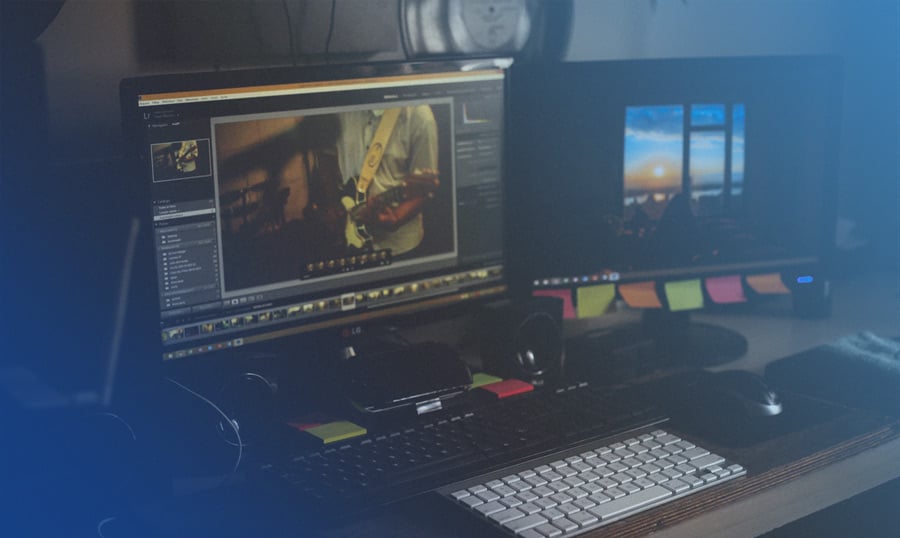Though landing pages will attract much of your onsite traffic, homepages are also a vital destination for website visitors.
If you haven’t been paying attention to it over the last few years, however, you’re probably unaware of a crucial shift that’s occurred in homepage design.
No longer is this the place for incorporating lots of text and action elements.
The modern homepage is essentially a visual masterpiece.
Homepage: The Portal to Your Brand
Large websites have hundreds, sometimes even thousands, of URLs connected to the domain, but none are as important, relevant or influential as the homepage. It’s the virtual storefront to your brand, and — whether you like it or not — it will create most visitors’ first impression of your company.
According to a study by the Missouri University School of Science and Technology, it takes less than two-tenths of a second for users to form their first impression of your site. In other words, if your homepage doesn’t have the right look, it’s going to set you back.
While 200 milliseconds might sound awfully brief, you honestly don’t have much more than a few seconds to capture new visitors with your homepage. With this in mind, many marketers and web designers like to use the “five-second test” as their method of establishing how significant a brief glance can be.
According to Christine Perfetti, who pioneered this exercise, “…the 5-Second Test involves showing users a single content page for a quick 5 seconds to gather their initial impressions.” Based on this information, web designers can optimize and calibrate to meet visitors’ expectations and preferences more effectively.
When you realize that your homepage communicates significant information about your brand in such a tiny flash of time, it should become obvious that you don’t have much room for error. Furthermore, the fact that the human brain processes visuals 60,000 times faster than text should tell you a predominantly visual homepage is what you’re after.
Given this knowledge, an increasing number of leading web designers, branding experts, and business owners have placed ever greater emphasis on amplifying visuals in homepage design over the past three or four years. In the process, they’ve established a number of compelling techniques and best practices for brands that want to make their homepage more visual.
Here are a few essentials you should be aware of
Full-Screen Visuals
You may have noticed that full-screen visuals on the homepage have become quite popular. The Dalmec homepage is a great example. It features massive, high-resolution images that set a tone for the brand and engage visitors with simple, yet immersive content.
The goal of full-screen visuals is to engage visitors immediately and create a visual connection with the brand that makes people want to navigate to other pages in order to learn more. It’s clean, crisp and magnetic.
Background Video
If there’s one thing that’s even more immersive than full-screen visuals, it’s full-screen background video. One of the newest trends in homepage design, background videos can be gorgeous, compelling, and often awe-inspiring. You can see an excellent example by checking out the TempalteMonster homepage. The key to background video is to make sure it doesn’t distract.
It’s all right for the video to autoplay, but there should never be the sound associated with it. It’s also smart to keep things relatively still and focused. Excessive motion or jerky transitions will make viewers feel uneasy.
Above vs. Below the Fold
Web design is all about balance. You want to use the space you have in the most efficient and effective manner, without producing an imbalanced look that compromises brand image.
This means learning to master “the fold.” As you’ll see on many visual homepages — that includes the two examples already referenced in this article — above-the-fold design is all about visuals and simplicity.
However, if you scroll down, you’ll discover further information, including text and other active elements. This is what the space below the fold is used for.
The visuals above the fold and content below the fold should complement each other and work together to produce an informative and immersive homepage experience that encourages visitors to take action. You can’t have one without the other.
Negative Space
Visuals aren’t always about splashes of color and gorgeous stills or videos of nature. To design a compelling homepage that is likely to evoke a positive first impression, you also have to recognize the importance of whitespace, also known as negative space.
The Chanel website is a solid example of this. Note how the surrounding open space makes the visuals on the homepage stand out so much more. Without that framing, everything inside would be more likely to blend in or run together.
Make Your Homepage Great
There’s no excuse for hosting an average homepage. If you’re going to invest time, money and effort into any one page on your website, this is the one.
Dazzle your first-time visitors and create a lasting first impression that draws people toward your brand and moves them to action.
